RCF has really spoiled us for the 2019 edition of PL + S with two systems ready for outdoor listening under the cloudy Frankfurt sky, the small HDL 26-A and the brand new HDL 50-A 4K, completed by the same set of 9 subs 9006- AS in End Fire assembly.
Here are our listening impressions.
First of all, let’s put this into perspective, as we do every year. These listening sessions take place in a rather limited space, even reduced compared to past years. The listener is positioned at a distance that any system, even not line-array type, can easily cover. The max level being 95 dB(A), small systems are clearly advantaged since each brand heavily relies, to say the least, on their subwoofers level.
The audio sources are a choice of studio recordings or even off-the-shelf CDs whose mixing and mastering, or even remastering allow, year after year, a race towards the Holy Grail of SPL, conscientiously gorging the Leq authorized with an unreasonable pre-emphasis of extreme lows and highs. To summarise, and this was admitted by many technicians present at these demos, you should take them just as a preview of what the product can do.
This year, RCF again shared its mobile podium Italian way with its cousins of dB Technologies, but also the new US cousins EAW, and hung two references from its range of HDL composite speakers, the 26-A and 50-A.
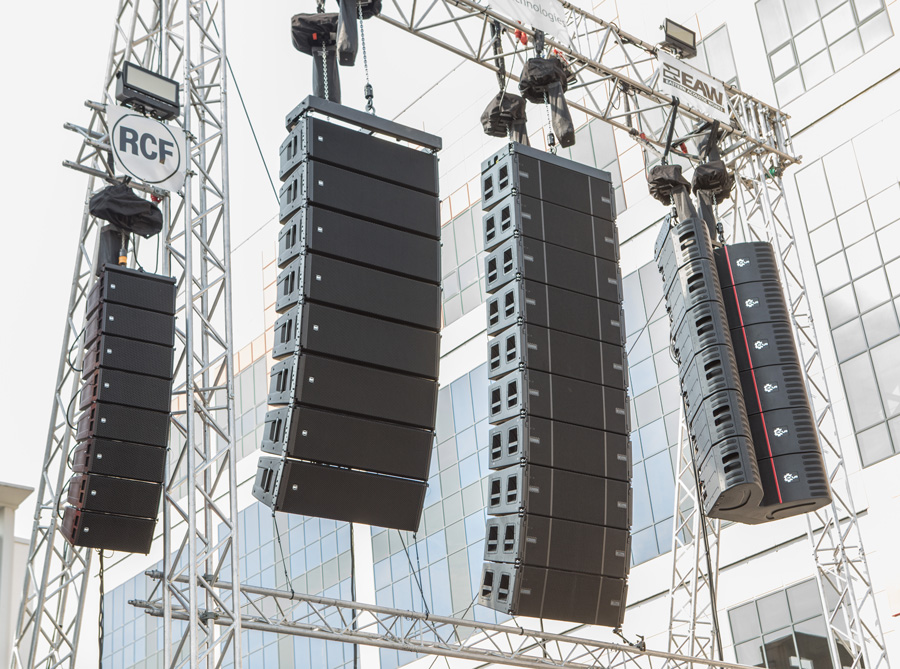
The collaboration with Leo Moracchioli, a famous YouTube musician, has been continued, so we’ve had a chance to see and hear Toto’s Africa and Ray Parker Jr.’s GhostBusters as musical extracts for the demos with subwoofers (and therefore high level), with, skilfully enough, in-between spoken intermissions explaining the strong points of the products, which helped lowering the LEQ during a few minutes, clever boys ;0)
HDL 26-A
The 26-A, surprisingly small with their 6″ transducers, while besides enthroned three models comprising 12″ or even 15″ components, are first put into in full range test with a musical program that contains hardly anything below 80 Hz, and get away with the honors during this brief test run.
The sonic rendering is very fluid, precise and without any roughness or color. The polar pattern appears to be wide and regular. The 90° diffusion angle is a reality, with a rapid but homogeneous decline when moving further away.
The voice is reproduced with a nice grain and what is needed of low medium and even bass frequencies when used on their own. They can be quite enough for an event, a speech, a comedian show or a theatre play.
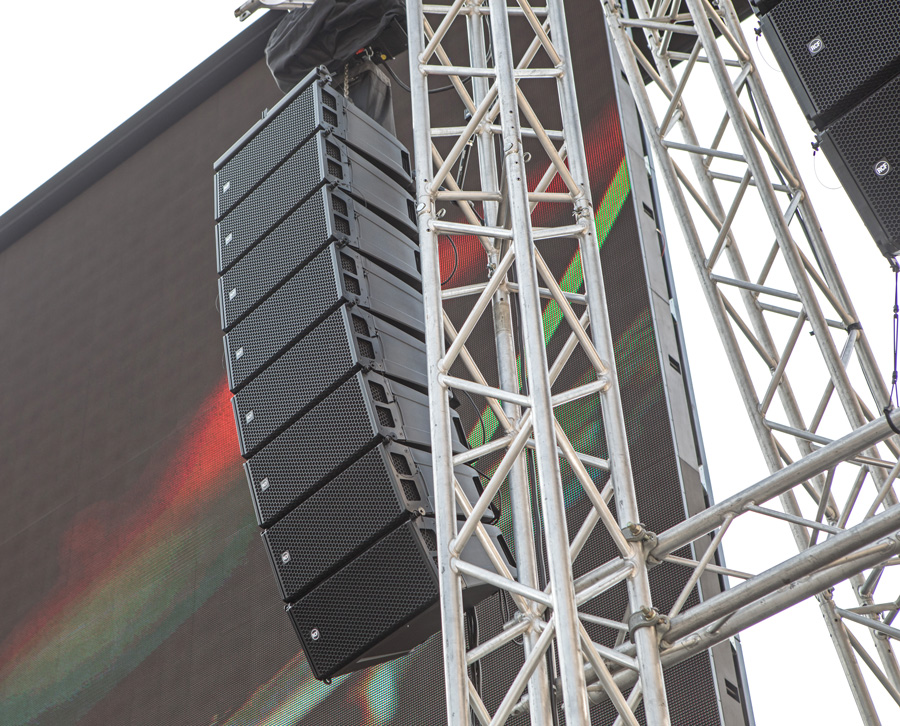
The 3″ engine steps in from 750 Hz and does a lot of work indeed. The stacking of 9006-AS subwoofers, a quite unique stack making it easy to obtain a very low interference lobe and set to seduce the large German audience present that day, inflates the 26-A.
Even if the real lows default, the illusion is almost perfect and the SPL flies away.
Revised and “metallized” Africa stems were at RCF disposal, allowing to simulate a line check, before the real thing was put to full volume for a final run tickling the threshold multiband limiter set to “hard”, preventing the breakage of transducers, but the “soft” compressor was already braking 6 dB before.
It pumps and slightly distorts a little, but the whole performance does stick to the road, especially considering we have outdoor conditions, with 8 very affordable small boxes per side. We can only take our hat off to RCF for this demo and still remember that it is not common that one couples such small mid-hi enclosures with such subs who have just warmed up a bit…

HDL 50-A 4K
With the HDL 50-A, now named 4K to indicate amplification under steroids, we clearly pass a stage. 8 elements per side, there is plenty to do. Lucio Boiardi-Serri, the Audio Specialist Audio Pro confirms this speaker now has the big power engine that was missing. Customers having bought the first version will even be allowed to swap their amp module to enjoy the new rendering. RCF is studying an affordable solution for this exchange.
On the other hand, it is impossible to mix the two models, although looking the same from the outside, in terms of transducers and enclosure, as the cutoff frequencies have changed slightly as well as the settings of the limiters. This new Pascal Audio original module provides 2000 W RMS for the two 12″, 1000 W for the four 6.5″ and 1000 W for both 3″ drivers (2″ throat). This doubling of the power inevitably adds 3 dB to the Max SPL, thus reaching 143 dB.
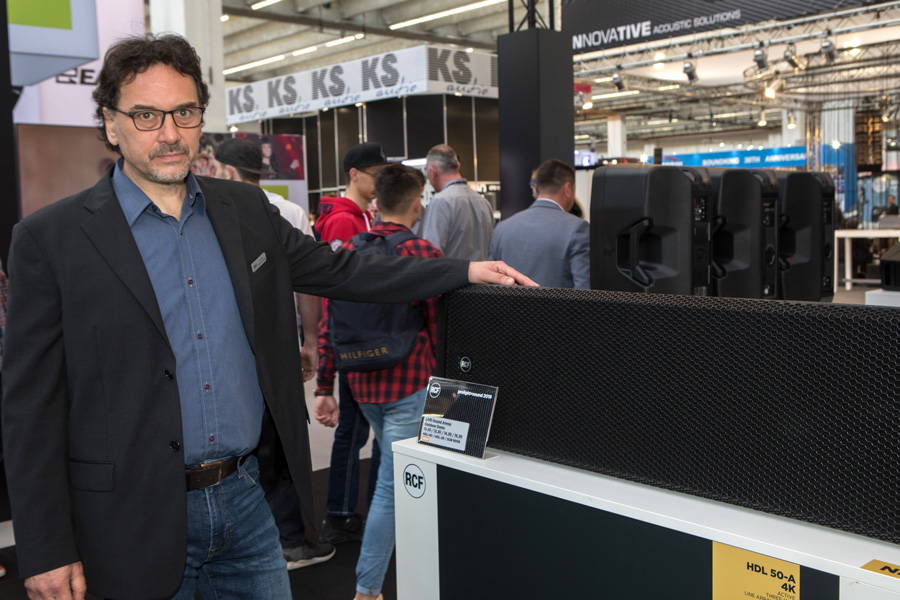
The first impression when listening in full range is that it “breathes” with no effort whatsoever. The sound is full, very deep and the bass is really present with a significant dynamic capacity and a gutsy rendering.
The grain of the voice is precise, the highs are heavily there but this is probably due to both the audio (and video) file of the demo, and, once again, very “German” calibration.
The polar dispersion is wide and the 90° are reached, with a medium distance attenuation more important compared to the rest of the spectrum, as one moves away from the center. No hardness nor color are noticeable, which makes this product stand perfectly in its position in the RCF range to deliver delicate musical extracts such as classical music.
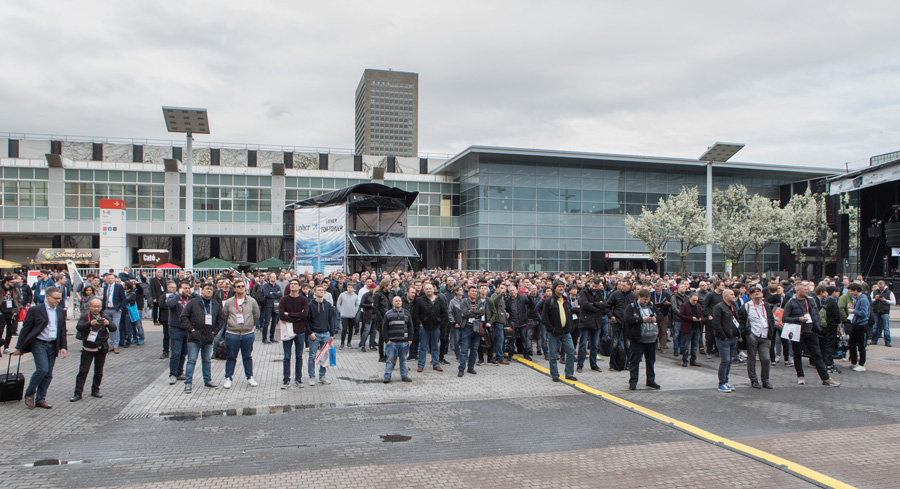
The addition of the subwoofers comes along the use of the arrangements of our good ol’ YouTube pal Leo Moracchioli , but unfortunately during “GhostBusters”, the title chosen by RCF, he has definitely overworked it, and we’re stuck with pumping, clipping and distortion; it therefore becomes impossible to even form an opinion on this system.
It is obvious that the HDL 50-A 4K is powerful and able to compete with other big industry players, but we will have to wait for a real concert with “real sound” to pronounce us.
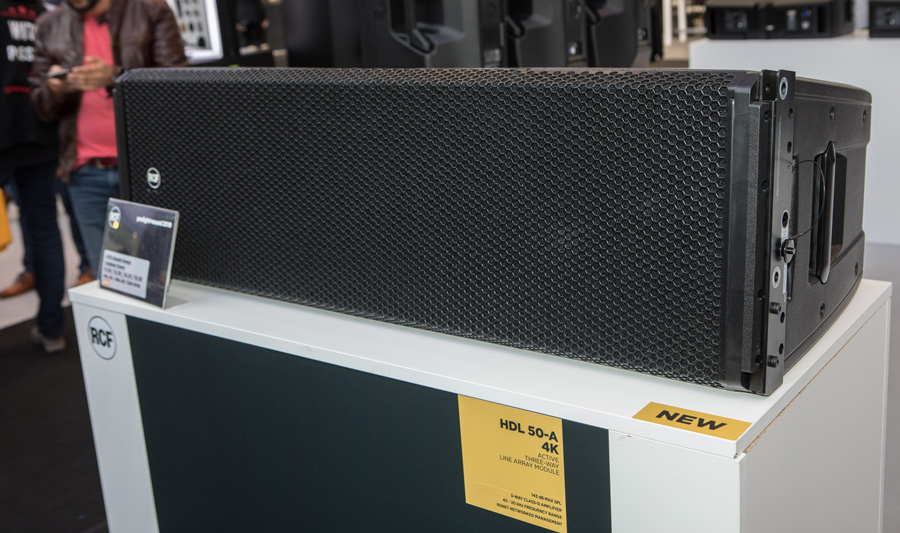
Let’s hope finally that RCF renews its demos in the future and passes on to other musical extracts, if possible from real concerts or blameless audio sources to challenge at best the attack, the dynamics and the respect of the audio spectrum of its very beautiful louspeakers.
More information on RCF HDL products.







